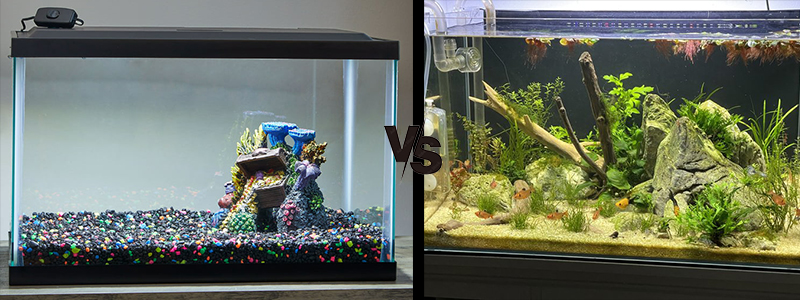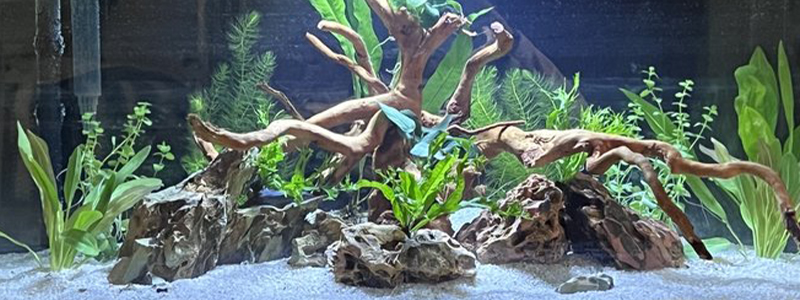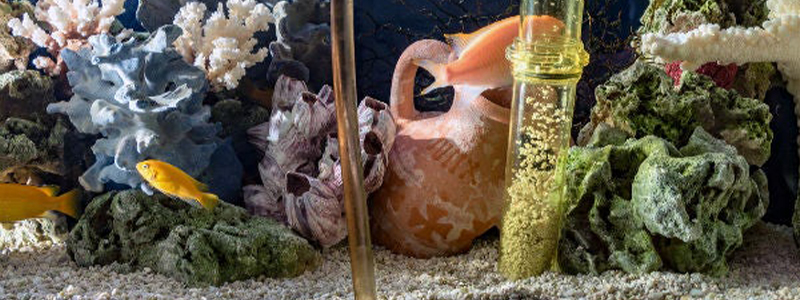Are you ready to immerse yourself in the mesmerizing world of Molly fish types? These alluring freshwater creatures have become a favorite among avid aquarium lovers across the globe!
Imagine, your favorite aquarium brimming with lively, colorful Molly fishes displaying their unique personalities. Sounds, beautiful right? Well, then in this article, we will take you through- how cool Molly fish look with their dope colors and designs.
You’ve got the Black Molly rocking’ those smooth velvet tones and then you’ve got the Sailfin Molly straight flexing’ those graceful fins like sails. Bottom line? These guys come in a bunch of vibrant shades that’ll blow your mind! So, come along with us as we set out to discover the awesome and wide-ranging realm of Molly fish varieties, uncovering their roots, care, and maintenance, and how stunningly gorgeous they can make your fish tank look.
What is Molly Fish?
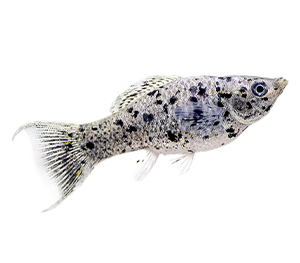
Molly fish, which belong to the Poecilia genus, are colorful freshwater fish loved for their vivid colors, lively personalities, and ease of maintenance. They have a sleek body type and a variety of colors, and they come from both South and Central America. Instead of laying eggs, livebearers give birth to live fry. They can coexist peacefully with other kinds of fish because of their peaceful nature. Moreover, these resilient and adaptable fish prosper in clean aquariums with an effective filtration system and a healthy diet. Molly fish can provide aquarium enthusiasts with many years of pleasure and beauty with proper care.
Molly Fish Types
Having a Molly fish in your aquarium is awesome because they come in various colors and shapes, allowing you to have an eye-catching display that will definitely impress. So, let’s take a look at various Molly fish types so that you can decide your next aquatic pet.
Disclosure: This article contains affiliate links. When you follow a link to purchase the products, I sometime earn a commission, at no additional cost to you. Read my full disclosure here.
Common Molly Fish
- Sailfin Molly
The Sailfin Molly exhibits a graceful and elegant appearance with its elongated dorsal and anal fins, which resemble flowing sails. This type of fish enhances the aesthetic appeal of an aquarium due to its vibrant hues that range from striking red, orange, and black to white colors. The mesmerizing color spectrum creates a captivating visual experience for viewers.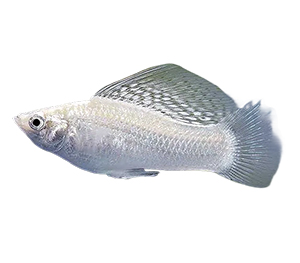
- Black Molly
The Black Molly is easily noticeable due to its remarkable dark black pigmentation, creating an impressive and eye-catching display in any aquarium. Frequently embellished with contrasting hues of silver or white, this fish’s slender form becomes even more attractive. Identified for their toughness and adaptability, Black Mollies are a beautiful alternative that requires minimal attention.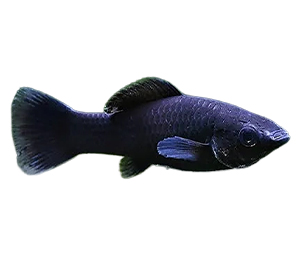
- Dalmatian Molly
The Dalmatian Molly has a captivating appearance with its body colored in white or cream and marked with striking black spots, which are reminiscent of the coat pattern of Dalmatian dogs. This exclusive marking adds to its overall charm and uniqueness. Known for their peaceful temperament and sociable behavior, these fish make ideal inhabitants in community aquariums that promote harmony amongst different species.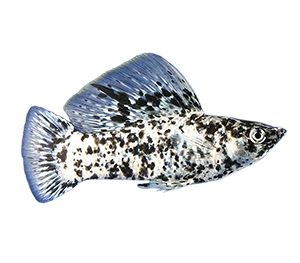
Care and Maintenance
| Fish | Size | Water Temperature | Diet | Tank Size | Temperament |
| Sailfin Molly | 3-4 inches | 24-28°C | Omnivores | 10 gallon | Peaceful |
| Black Molly | 2-4 inches | 24-28°C | Omnivores | 10 gallon | Peaceful |
| Dalmatian Molly | 3-4 inches | 24-28°C | Omnivores | 10 gallon | Peaceful |
Fancy Molly Fish
- Balloon Molly
The Balloon Molly is known for its distinctive, circular physique that resembles a balloon, distinguishes it from other types of Mollies. This exceptional attribute lends to its charisma and peculiarity, making it a preferred option amongst those who keep aquariums. With various shades such as black, gold, and silver, the Balloon Molly provides an aesthetically pleasing display and captures attention in any fish tank setting.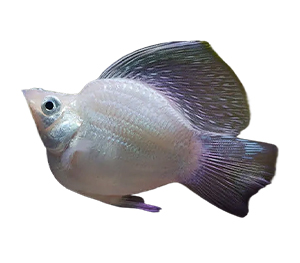
- Lyretail Molly
The Lyretail Molly fish possesses an elongated and flowy tail fin that resembles the shape of a lyre, which is very unique and noticeable. This specific variety flaunts bright colors such as orange, red, or yellow lending it a striking appearance in an aquarium. With its stunning gracefulness and captivating beauty, the lyretail adds a touch of sophistication making it visually appealing among all Molly varieties.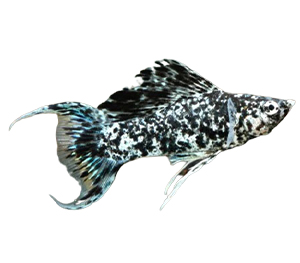
- Short-Finned Molly
The Short-Finned Molly, as its name implies, has shorter fins than other Molly species. Its sleek and lightweight shape, combined with this unique characteristic, set it apart from other Molly fishes. The Short-Finned Molly provides aquarium enthusiasts with a beautiful and varied selection of color variations that include black, silver, and orange.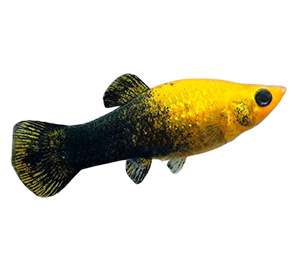
Care and Maintenance
| Fish | Size | Water Temperature | Diet | Tank Size | Temperament |
| Balloon Molly | 2-4 inches | 24-28°C | Omnivores | 10 gallon | Peaceful |
| Lyretail Molly | 3-4 inches | 24-28°C | Omnivores | 10 gallon | Peaceful |
| Short-Finned | 2-4 inches | 24-28°C | Omnivores | 10 gallon | Peaceful |
Rare Molly Fish
- Gold Dust Molly
The Gold Dust Molly has an appealing shimmering appearance that makes its body look like it is covered in tiny golden fragments or dust, giving it a touch of shine and sophistication. This variety frequently combines the hues of metallic gold, metallic silver, and black to produce an aquarium display that is both stunning and captivating. Gold Dust Mollies are well known for their calm nature and are social fish that flourish in community aquariums, making them a popular selection for aquarists looking for compatible yet pretty fish.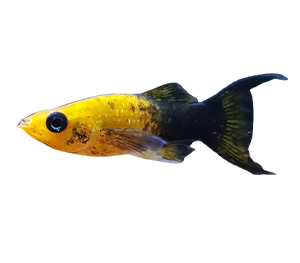
- Green Sailfin Molly
The Green Sailfin Molly has a striking green coloration all over its body, giving it a unique and refreshing appearance. This species’ extended dorsal and anal fins resemble flowing sails, giving the fish a graceful and eye-catching appearance. The lively and active nature of green sailfin mollies makes them strong swimmers who can add energy and motion to the water.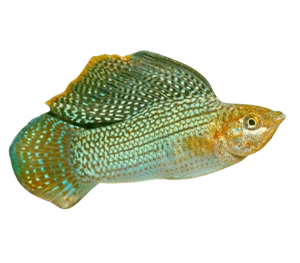
- Panda Molly
The Panda Molly stands out by its striking black and white coloring, which looks like the markings present on a panda. This particular type has a striking pattern with a body that is mostly white and adorned with black patches or spots. Panda Mollies are admired for their unique look, which gives any aquarium a playful element, making them a wonderful option for aquarists.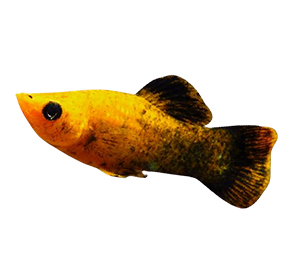
Care And Maintenance
| Fish | Size | Water Temperature | Diet | Tank Size | Temperament |
| Gold Dust | 2-4 inches | 24-28°C | Omnivores | 10 gallon | Peaceful |
| Green Sailfin | 3-4 inches | 24-28°C | Omnivores | 20 gallon | Peaceful |
| Panda | 2-4 inches | 24-28°C | Omnivores | 10 gallon | Peaceful |
Molly Fish Compatibility and Breeding
- Compatibility
Molly fish, when kept with other fish types that belong to the same community, with the same size as them, the risk of predation is reduced and they thrive easily. Mollies get along well with danios, cory catfish, loaches, and other livebearers in their aquariums. But bear in mind to not add them along with bigger mollies like cherry shrimp because they might get eaten.
Furthermore, although mollies are typically calm fish, they might investigate the edibleness of various aquarium items. Therefore, it is best to keep them away from long-finned, slow-moving fish in their tank. - Breeding
Mollies love to breed, like many livebearers, so the appropriate advice is to get a minimum of 2 or 3 female mollies for every male fish. A male can be recognized by his gonopodium, a stick-shaped anal fin; a female’s anal fin is fan-shaped.
Fascinating Facts about Molly Fish
- Molly fish are well-known for engaging in a behavior known as “flashing,” in which they quickly move and scratch their bodies against aquarium fixtures. It is thought to be a method of getting rid of parasites or irritants.
- Some Molly fish are capable of switching genders. When there aren’t enough females in the group, a dominant male will change into a female, a phenomenon known as sequential hermaphroditism.
- A broad variety of water salinities can be tolerated by Molly fish, which is a special ability. They can adapt to conditions in brackish water, which is a mix of clean water and saltwater.
- Molly fish can be found in a variety of water environments in the wild, including clean water, swamps, and even coastal regions.
- The remarkable internal sperm storage capacity of female Molly fish enables them to fertilize many eggs without the need for a male’s presence for several months.
- Molly fish have a unique organ in their inner ears called the “saccular organ” that aids in preserving their equilibrium underwater.
Molly Fish: Guardians of Aquatic Health
- Algae Control: Molly fish in the tank naturally consume algae, which effectively controls its growth and prevents excessive algae blooms.
- Water Quality Indicators: Molly fish respond quickly to alterations in water settings, thus serving as solid indicators of water quality and possible issues that need to be dealt with in the water.
- Pest Population Control: Molly fish serve as an organic pest control measure and help to keep the environment free of pests by actively feeding on the eggs of mosquitoes and other small pests.
- Cleaning Activity: Molly fish constantly move around and hunt for food, which keeps debris and other waste from settling and keeps the tank cleaner and healthier.
- Nutrient Cycling: Molly fish create waste that feeds good bacteria in the biological filtration system of the aquarium, promoting a steady nitrogen cycle and the health of the ecosystem as a whole.
Wrap Up
Whether you are a seasoned aquarium hobbyist or just starting, getting to know the different kinds of Molly fish will surely enhance your aquatic adventure. Hence, we hope that exploring this article has helped you to learn about the traits and lively elegance of every Molly type. They can certainly boost and enliven your experience!

